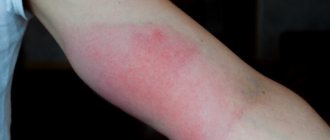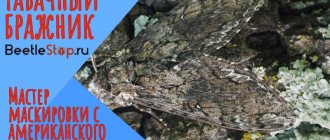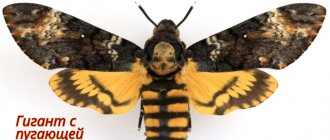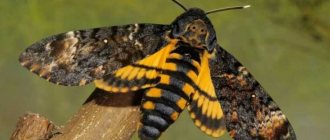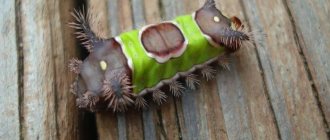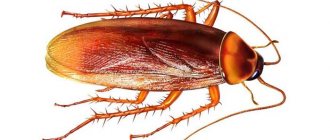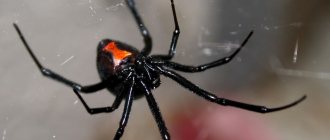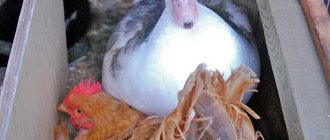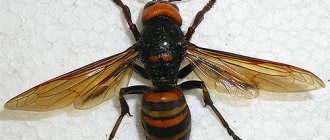Hawk moths are a large family of medium and large heat-loving butterflies. Among more than 1 thousand species of insects leading a nocturnal lifestyle, there are several groups that stand out from the general rhythm. The tongue hawk moth or proboscis is a diurnal butterfly. It makes its famous flights over flowers during daylight hours, so people see it more often than its nocturnal counterparts.
It's not a bumblebee or a bird - it's a butterfly
In March, on the Black Sea coast of the Caucasus, in city parks and squares, you can observe how peculiar insects . In flight they are similar in size to large bumblebees. Therefore, many vacationers, without hesitation, take them seriously for formidable Hymenoptera.
And some even think that these are small birds. This is a world of wonderful discoveries - anyone who is not just interested in nature, but studies it from scientific literature, in particular, from reference books, of course, knows that both versions are erroneous. Before us are not bumblebees or birds, but ordinary tongues (Macroglossum stellatarum) - butterflies belonging to the family of hawk moths (Sphingidae).
| Scientific classification | |
| Domain: | Eukaryotes |
| Kingdom: | Animals |
| Type: | Arthropods |
| Squad: | Lepidoptera |
| Family: | Hawk Moths |
| International scientific name | |
| Sphingidae Latreille. | |
Lifestyle
The tongue hawk moth is active during the day, but can fly at dusk. He feels comfortable in cloudy and cool weather. The butterfly does not tolerate heat well; it falls into a sleepy state. It flies to flowers only in the early morning and evening, when the air temperature drops a little. Moths are attracted to plants with a strong aroma and a large supply of nectar - jasmine, primrose, viola, French tagetes, phlox, verbena.
An interesting feature is that butterflies demonstrate the presence of memory. They return to selected colors several days at certain times. They remember the plants on which they fed and do not fly up to them a second time, but collect nectar from other flowers.
Ordinary tongues
Common tongue (Macroglossum stellatarum)
These inhabitants of meadows and mountains, forest dwellers, in comparison with other representatives of the family, this species is not considered large, reaching a wingspan of only 38-45 mm. Like other hawk moths, tongue hawks have a thick abdomen, short hind wings and elongated fore wings. Those who travel to the World of Nature can see these butterflies in the vicinity of Sochi almost all year round, with the exception of the rainy seasons and the cold snowy period, from January to February. Flying out after a short winter, already in early March, they not only visit flowers, but also, together with flies, soldier bugs and other insects, often bask on the stone walls on the embankment, warmed by the spring sun.
In the resting position, the tongue hawks hide their brownish-orange hind wings, and the grayish coloring of the front wings and abdomen makes the hawkmoth almost invisible. It is enough to pass by, carelessly casting a shadow on a stone slab, and the disturbed Tongue immediately quickly takes off. Developing high speed, which, according to scientists, can reach 60 km/h, it is capable of abruptly changing the direction of flight. Possessing excellent flight qualities, tongues not only can fly rapidly, but also, like some other hawkmoths, for example, the death's head (Acherontia atropos), are capable of flying over long distances. Living in the southern regions of Russia, in warm years they fly to the Moscow region, and sometimes even further north.
You can meet shabby tongues at the end of summer in the northeast of the Moscow region. However, winters in the Middle Zone are too cold for guests from the south. Therefore, hawkmoths from the genus Hemaris, similar in size, cannot winter, live and reproduce here, giving up their place in the northern latitudes to other hawk moths of the genus Hemaris.
Number of insects
The number of representatives of the hawk moth family varies greatly from year to year. This is due to a number of reasons:
- a sharp change in weather conditions that are not typical for the habitat and breeding areas of the species;
- pollution of habitats with chemical products;
- sudden changes in temperature;
- unpleasant weather conditions during the migration period.
In favorable periods, the numerical composition of the butterfly population can be quite large, but in difficult years the number of insects decreases.
Bumblebees
Scabiosa hawk moth or Scabiosa bumblebee hawk (Hemaris tityus)
Nature is full of wonders. Representatives of this genus are a striking example of the phenomenon of mimicry in the insect world. Thanks to their transparent wings and shaggy multi-colored abdomen, they are so similar to bumblebees that they even received the generic name bumblebee. On the territory of the Moscow region, two species from this genus are widespread: the scabious bumblebee (Hemaris titus) and the honeysuckle (Hemaris fuciformis). Both types are very similar to each other. The difference between them can be noticed if you carefully examine the middle cell of the fore wings of these hawk moths . In the honeysuckle bumblebee this cell is divided by a vein, but in the scabiosis bumblebee there is no such vein.
Honeysuckle Hawkmoth or Honeysuckle Bumblebee (Hemaris fuciformis)
The honeysuckle bumblebee is found in the south of the Moscow region, in the valley of the Sushka River, which flows in the vicinity of the Prioksko-Terrasny Nature Reserve. According to data published by the staff of the reserve, the honeysuckle bumblebee is found quite often in these places and is considered common.
Bumblebees are also common in the south of the Far East, in the Primorsky Territory. In contrast to Central Russia, in addition to the honeysuckle bumblebee (Hyloicus pinastri), this region contains H. radians, H. affinis and H. staudingeri (see “Key to insects of the Russian Far East”. The species, H. affinis, is externally different from H. radians with brown-brown basal spots on the hind wings can be found in the Ussuri taiga of the Olga region, near the village of Gornovodnoye. Like bumblebees in the Moscow region, these butterflies were very active. Flying from flower to flower, they then hover for a few seconds in air above the inflorescence, then again quickly rush somewhere forward, hiding behind the bend of the forest road. Thanks to the subtropical climate of Primorye, almost all bumblebees living in the south of the Far East also produce two generations.
Wing coloring
Butterfly scales coloring page
The cavity contains a pigment that gives color to the entire scale. A number of scales with the same or different pigments make up the bright, often very complex and contrasting pattern of the wings. Wing coloring can be created not only from pigments. In many of our diurnal butterflies, as well as in the brightest representatives of the tropics, this occurs due to the interference of light waves. On the surface of the flake there are very small ridges that, at a certain angle of incidence, reflect light with a certain wavelength.
Butterfly Morpho (lat. Morpho)
this is how the iridescent color, bright blue, cyan, orange or silver of our bluebirds, mother of pearl, and the majestic South American Morpho and Ornithopter of Southeast Asia are born. The staircase doesn't just add color. In males, in some cavities, instead of pigment, there is a gland that secretes pheromones. Such scales are called androconia: it is thanks to them that the males of the common white turnip smell like lemon or cutter.
Family Sphingidae. Hawkmoths.
Like tongues, all the bumblebees described above fly during the day. In contrast, the vast majority of members of the family Sphingidae prefer night or evening twilight. Already in the second half of May, when the night temperature in the Moscow region rises above 5°C, linden hawk moths .
Linden hawk moth (Mimas tiliae)
They fly to the light of a lantern when it gets completely dark, closer to midnight. In the northeast of the Moscow region, this species becomes especially numerous in the twentieth of June. At this time, in one warm, windless night, you can sometimes count about a dozen individuals of this moth , which is especially interesting for its variability. Thanks to the fairly large number of butterflies, it is not difficult to track the phenomenon of variability. Most often, linden hawk moths are colored in grayish-green tones, but occasionally you can find specimens with a pronounced orange pattern, and sometimes even completely reddish forms.
Linden hawk moth (Mimas tiliae)
Speaking about the variability of the linden hawkmoth, one cannot help but recall that in the south of the Far East there lives another species from the same genus, similar in design, but colored in reddish-brown tones - Mimas christophi. Some hawkmoths, such as Mimas christophi and Hyloicus morio, were very similar in appearance to the linden and pine hawkmoths (Hyloicus pinastri) near Moscow. Others, such as the aspen or Amur hawk moth (Laothoe amurensis), and the blind hawk moth (Smerinthus caecus), are considered rare for the Moscow region, but common for the eastern regions of Russia.
Jankowski's Hawkmoth (Marumba jankowskii)
And species such as Ampelophaga rubiginosa, Phyllosphingia dissimilis, Tatarinov’s hawk moths (Callambulyx tatarinovi) and Yankovsky’s (Marumba jankowskii) have no resemblance at all to representatives of the Sphingidae of Central Russia and are characteristic only of the south of the Far East and adjacent territories.
Each hawk moth from the last five species is interesting in its own way, but the medium-sized but unusually colored Tatarinov's hawk moth stands out especially. The main background of the front wings of the head, chest and abdomen is green. Against this background, the pinkish-crimson hind wings look very impressive.
At the beginning of July, while staying in the village of Gornovodnoe, you can see how hawk moth , along with other representatives of its family, flies into the world. Occasionally, these nocturnal inhabitants could be found during the day on the grass and bushes not far from the place of night flight, and sometimes they were simply found in the taiga. There is also Yankovsky's hawk moth from the genus Marumba. This Far Eastern relative of the southern European oak hawk moth (Marumba quercus) is brownish in color. In the Olginsky district of Primorsky Krai it flies at the end of June, i.e. a little earlier than hawk moth , but less common.
Christoph's Hawkmoth (Mimas christophi)
In addition to hawkmoth , 3 more species from the genus Marumba live in Primorye: Marumba gaschkewitchi, M. maackii, M. sperchius. Externally, they differ in size and color of the hind wings. The hawk moths of Yankovsky and Maak are especially similar. They can be distinguished from each other only after a careful examination of the hind wings. In the first species, their edges should not have ocher-yellow strokes or stripes. Just like hawkmoths of the genus Marumba, representatives of the genera Kentrochrysalis, Dolbina and Sphingulus are difficult to distinguish by external characteristics. In Russia, these hawk moths live only in the south of the Far East. All 5 species from these genera have a nondescript gray color, which vaguely resembles pine hawk moths from the Moscow region.
Strecker's Hawk Moth (Kentrochrysalis streckeri)
hawk moth (Kentrochrysalis streckeri) differs from other species in having white antennae with a dark brown streak at the apex. Together with the aspen hawkmoth, hawkmoths began to fly to the light of the lantern at dusk and continued to fly until late at night, making up the overwhelming majority among the total mass of hawkmoths. By the beginning of July, their numbers noticeably decrease, and the arriving butterflies were already very shabby, with a pattern difficult to distinguish.
Tatarinov's Hawk Moth (Callambulyx tatarinovii)
Amur hawk moth, or aspen hawk moth (Laothoe amurensis)
After a couple of weeks, Strecker's hawkmoths disappear completely, giving way to the similar-colored but smaller Tancre's hawkmoth (Dolbina tancrei). In mid-July, Tatarinov's hawk moths arrive less and less, and Yankovsky's hawk moths and Mimas christophi stop appearing. Instead, blind moths (Smerintus caecus) and hawk moths Hyloicus morio are becoming increasingly common. Thus, thanks to the good interchange of species, the diversity and number of hawk moths in Primorye practically does not decrease by the end of July.
Taste preferences
If you are lucky enough to see a couture camouflage butterfly in the evening in a warm climate, it could be an oleander hawk. What does this beauty eat? Like most hawk moths, oleanders are selective in their diet.
The caterpillar feeds on periwinkle and oleander. Despite the fact that both of these plants are poisonous, the caterpillar itself does not accumulate dangerous substances, which makes it completely defenseless. In some regions, the insect may feed on grape leaves, but this does not happen often.
Is there anything more unusual than designer colors in an oleander moth butterfly? Interesting facts were revealed by entomologists during the observation process:
- All types of butterflies, and oleanders are no exception, they do not land on flowers when feeding. They soar above them, rapidly flapping their wings. From the outside it may seem that a hummingbird is hovering over the flower. But butterflies and hummingbirds do not have interconnected intersections; these species are just one example of convergent evolution.
- The oleander butterfly can migrate long distances. This is facilitated by the ability to develop high speed in flight. This species of butterfly is considered the fastest among lepidopteran insects; their speed can reach 50 km/h.
- The oleander moth is able to quickly pollinate a large number of flowers. This is due to the ability to move quickly and the presence of a long proboscis.
- A rare species of butterfly - the oleander butterfly is listed in the Red Book of the USSR.
To maintain the population and preserve the species, scientists recommend growing oleander plantations in resort areas to attract oleander moths and create conditions for reproduction.
It is no coincidence that the hawk moth has a second name - the hummingbird butterfly. Many species of amazing insects from the Lepidoptera family are listed in the Red Book. Photos of “northern hummingbirds” always cause admiration - these creatures are so unusual and colorful.
Hawk moth in the garden - forever or to the loss of part of the harvest? Not all owners know what to expect from an unusual creature
It is important to remember that large exotic butterfly caterpillars are just as voracious as smaller ones. But a rare species should not be destroyed
Find out more interesting facts about the life of unusual creatures.
Reproduction
The hummingbird-like butterfly prefers to lay eggs on food plants. He does this on the fly, attacking them one at a time. They form caterpillars, the size of which directly depends on the type of butterfly. They can be yellow-green or brown-red in color with white dotted warts, black spiracles and longitudinal white, yellow or red stripes located near the "legs". Almost immediately after the emergence of seedlings, they begin to eat the leaves of the plants closest to the spawning site, as a result of which the shoots become bare and soon die. Moth caterpillars can cause significant damage to most crops, including grapes and potatoes, which suffer most from their incursions.
Before the pupa, butterfly caterpillars turn red and burrow into the ground without a cocoon. Even though the lid of the pupa's proboscis is welded, it still sticks out like glue. The color of the pupa is clear; depending on the type of butterfly, it can vary from gray-brown to bluish-green.
Habitat
An insect similar to a hummingbird is capable of long-distance flights. Up to two generations of butterflies can develop within a year. It flies for the first time from the first days of May to mid-July. Most of them are from the south. The second generation flies from August to October. At the same time, some butterflies migrate to warm regions in the fall.
An insect similar to a hummingbird can be found in almost any country with a warm temperate climate. For example, in Crimea, hawk moths are found everywhere and produce at least three generations during the year. Both the butterfly and the pupa hibernate. Also, if there is a prolonged thaw in the winter, they may make an unscheduled migration, so they can be seen in any winter month.
Open, well-heated areas are preferred as permanent habitats. In cities, it can be seen in flower beds hanging over flowering plants. In nature, the moth prefers to feed on the nectar of cornflowers and blueberries, and in cultivated landscapes - geraniums and petunias.
The world of insects is huge and amazing. A special place in it is occupied by moths, otherwise known as butterflies, the diversity of which amazes everyone: an ordinary person, an amateur, and even a researcher. So, among the well-known marigolds there are truly exotic representatives of this class. Hawk moth is similar. The family has informal names such as "sphinx" or "northern hummingbird". The origin of the former is associated with the unusual way of eating food from moths, the latter - with the heroic size of usually fragile and graceful insects.
Entomologists have identified a huge number of species of hawk moth, each of which has a characteristic color and characteristic wing design. This can be verified by looking at specific examples. Thus, the producer of wine hawks is the owner of exquisite burgundy wings; The head of a dead hawk stands out among others with a unique pattern on its wings and back, which resembles the symbolic image of a human skull.
What is the reason for such a large number of chromatic varieties of species of the same family? Scientists attribute this to the dependence of color changes on the animal’s diet and habitat. However, despite such a wide palette, most hawthorn butterflies are decorated with a pattern, the compositional elements of which are an oblique stripe and large “eye” spots.”
Links
- [archive.is/20121225020120/babochki-kryma.narod.ru/2_Sphingidae/Macroglossum_stellatarum.htm Macroglossum stellatarum (Linnaeus, 1758) - Common Tongue]
- [trifoly.by.ru/lepidoptera1/str/str%20_c.html Common tongue, or common proboscis (Macroglossum ...)] (inaccessible link)
- [www.geogr.msu.ru/rb/rb/animals/macroglossum_stellatarum.html Red Book of the Moscow Region](inaccessible link - history
)
| There is a more complete article Taubenschwänzchen (German) in another language section. You can help the project by expanding the current article with a translation. |
Caterpillar behavior
Moth caterpillars are large, thick, and brightly colored. At the posterior end of the body they have a horn-like growth. If you take such a caterpillar in your hands, it shrinks and begins to shrink violently. So try to scare away a possible predator. But humans should not be afraid of these caterpillars. Hawk moths, which feed on straw, fireweed and milkweed, are also not dangerous. The adult butterfly that this caterpillar turns into will feed on nectar.
Butterfly caterpillar dresses very impressively
Hawk moths are considered moths, but in fact many of them only fly during the day. These are, first of all, lazyans and ischelivids. Their names speak for themselves. Tonguebirds have a very long proboscis (in fact, it plays the role of a tongue), and icheleids are very similar to bumblebees; they are difficult to distinguish from a distance. They both eat nectar, and during the day, when most of the flower heads are open, it is easier for them to find food for themselves. After all, these butterflies, unlike many others, must also feed at the imago stage: they do not have enough food accumulated in the form of a “caterpillar”
The tongue is a butterfly, similar to a hummingbird
Source – https://sadovnic.su/babochki-i-mushki/yazykan-obyknovennyj.html

